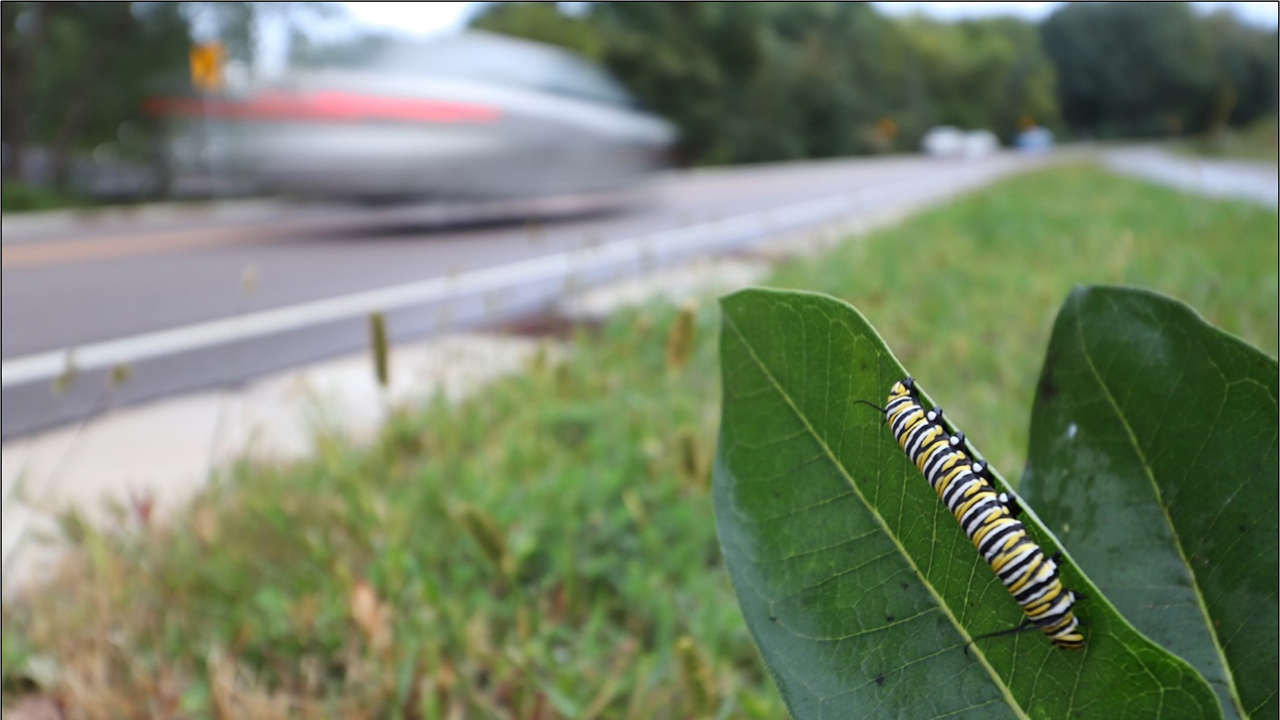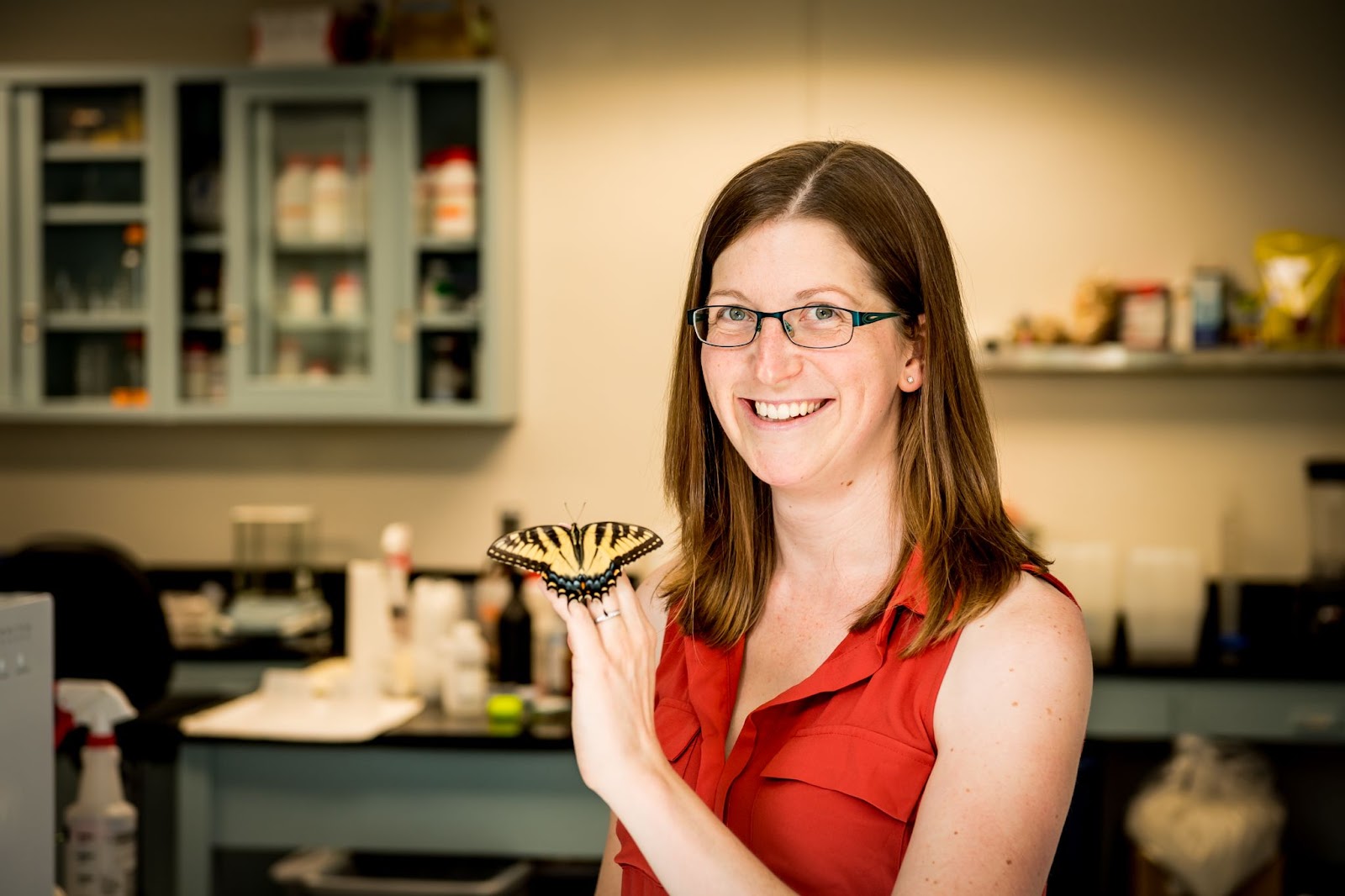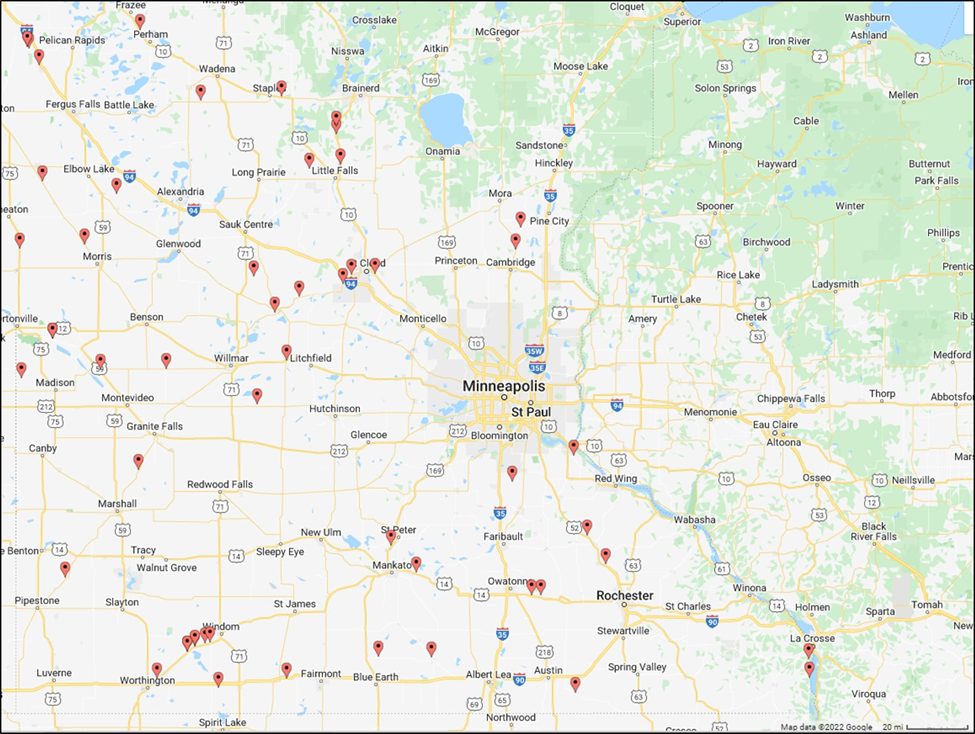
Monarch caterpillar on milkweed plant in roadside
Most people spend little time considering roadsides. Not so for College of Biological Sciences Associate Professor of Ecology, Evolution, and Behavior Emilie Snell-Rood, who has overseen three projects and more than 400 roadside site surveys in Minnesota to determine the benefits and the risks of developing roadside habitats for declining native plants and pollinators. She is using the results of this research to help with conservation efforts by providing data-driven guidance to roadside managers.
OVPR is proud to recognize this forward-thinking, important work by identifying Snell-Rood as an honorable mention for the inaugural Innovation Impact Case Award, which highlights research that has had a significant impact outside of academia and made a meaningful difference in our communities.
Providing crucial support for 70 percent of the country’s crops, pollinators and insects, including native bees and monarch butterflies, are an important part of our ecosystem, yet many are declining due to factors including habitat loss. To counteract this decline, many are looking toward investing in roadsides, including the Biden Administration, which recently passed an infrastructure bill containing millions of dollars in funding toward roadside monarch habitat. In Minnesota alone, roadsides offer the potential for over half a million acres of viable pollinator-friendly habitat.
Despite the push to develop roadside habitats for these important species, there are risks, including car collisions and road toxins and agricultural chemicals, such as salt and pesticides, which could do more harm than good. It can also be expensive and difficult to develop new habitats. Snell-Rood’s research explored the potential of roadside habitats for monarchs, the toxicity of roadsides, and restoration methods. The cumulative findings suggest that there are more benefits than drawbacks.

Jackson Eddy/A Frame Forward Photography
The midwest is a crucial region for monarchs, helping to revamp the breeding population of monarchs every summer. The potential of roadsides to aid in this process is expansive as the average Minnesota roadside is a great source of milkweed, an important food source for monarchs and one of the few native prairie plants that thrive in a roadside setting. More than half of Minnesota roadsides contain milkweed, which average more than 2000 stems per mile of road.
Their research also found that while roadside plants are absorbing toxins, the vast majority are not lethal. Snell-Rood estimates that fewer than five percent of roadside plants are lethal to pollinators, especially bees, that reduce their likelihood of ingesting too many toxins by feeding on a variety of plants.
“Finally, we found that prairie restoration needs to be intentional. If you want native prairie plants in roadsides, you do need to seed them in,” said Snell-Rood. “There’s so much competition with invasive species that native plants are not just randomly colonizing the roadside. We also found that there’s a greater diversity of pollinators when there’s a greater diversity of plants, and that available flowers are key. Based on these findings, we have recommendations about which native plants do really well on Minnesota roadsides and feed pollinators, such as bee balm, goldenrod, and milkweed.”

Location of roadside survey sites as part of 2018 study on roadside plants used by pollinators
In addition to publishing their results in peer-reviewed journals, Snell-Rood and her team are communicating their findings in a variety of ways to roadside managers, including working with MnDOT to revise roadside management practices, sharing findings with agencies such as the Board of Water and Soil Resources and the Department of Natural Resources, and presenting as many webinars as possible.
“It's important to note that this work is a big collaboration, and I am grateful to the grad students, postdocs, and faculty that made it happen,” added Snell-Rood.
The work continues for Snell-Rood, who wants to conduct more research on roadside collisions and the effect of roads on ecosystems. She is also interested in urban heavy metal pollution, especially lead in soil, and finding new methods to reduce lead. This project recently won a Minnesota Futures Award and will hopefully provide guidance to cities, watershed management organizations, and other stakeholders.